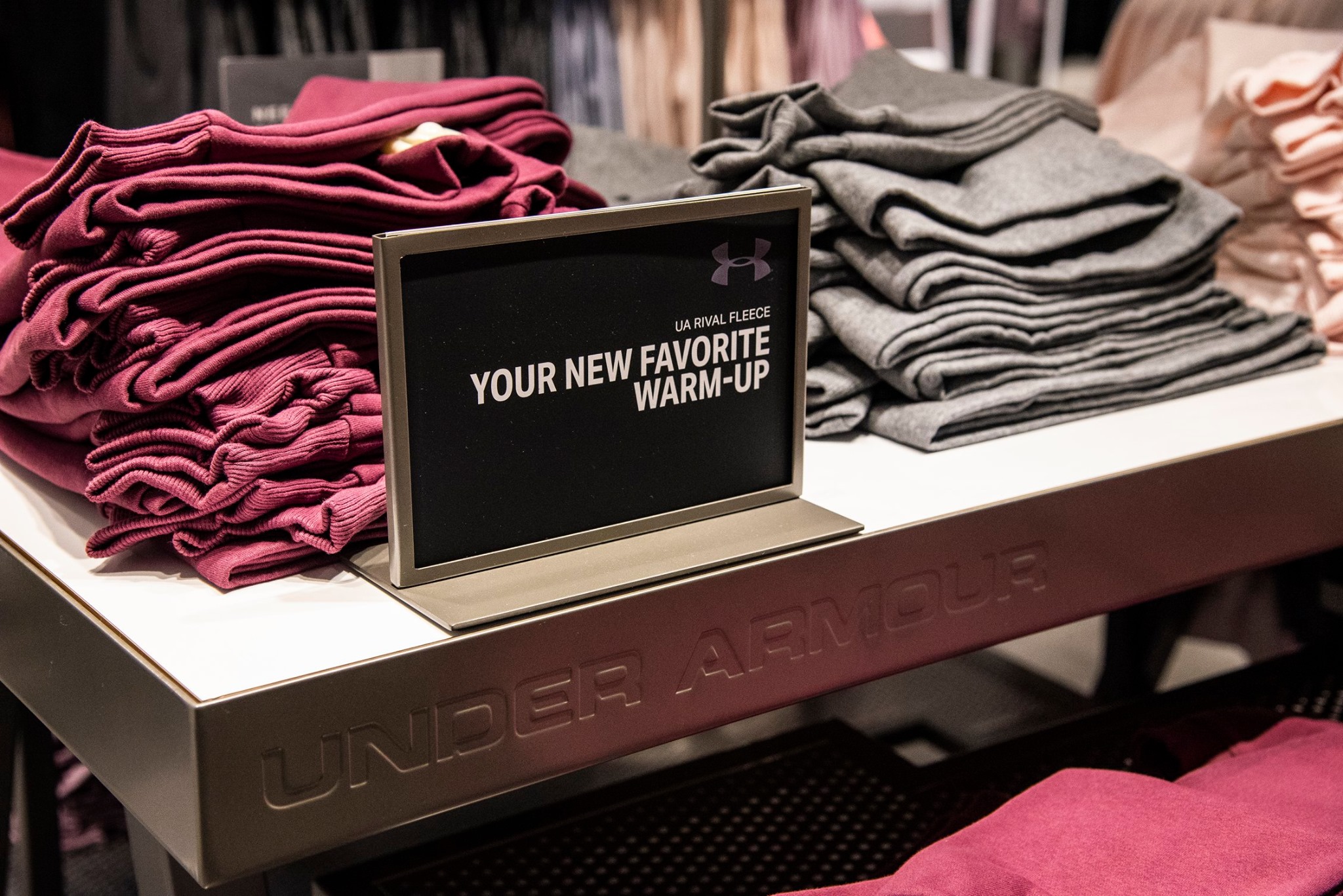Retailers use merchandise displays to present their product to entice buyers to make a purchase. Merchandise displays are often a branded piece, that coordinate with marketing, sales, and advertising efforts and enhance a brand’s product and image.

The Surfacequest Certified Installation Team updated Under Armour’s existing retail fixtures with a high-gloss white Fusion.
Types of Merchandise Displays
There are many types of merchandise displays. Some of the most popular types include:
Window Displays
These displays are typically open on to a street, shopping mall, or courtyard and intend to attract the attention of those passing by.
Showcase Displays
Showcase displays feature items of high interest or value to the brand’s primary clientele. These displays are often located in high traffic areas.
Found-Space Displays
Found-Space displays utilize small, usable areas of a store, including the tops of product carousels and wall space.
Each of these types of merchandise displays can be updated and wrapped with Architectural Fusions, achieving looks ranging from wood to stone, minimalistic to bold. Reusing existing fixtures not only saves money, but also saves on the amount of waste that ends up in a landfill. Architectural Fusions give new life to tired displays and have transformative powers in the retail store environment.

Effective Merchandise Displays
The best way to test a merchandise display is to ask “does it sell?” The following considerations should also be made:
- Displays should always be clean, neat and well-maintained.
- Each display should showcase a single point of interest. Do not overcrowd a display. Customers tend to pass overly messy, busy-looking displays.
- Merchandise displays should inspire and educate customers. A well-conceived display could, for example, illustrate a new use for a product that would not have occurred to most shoppers.